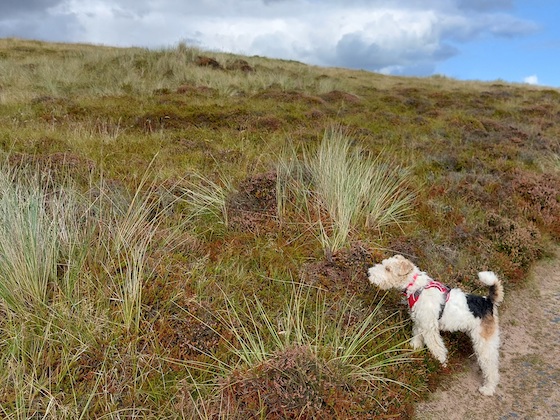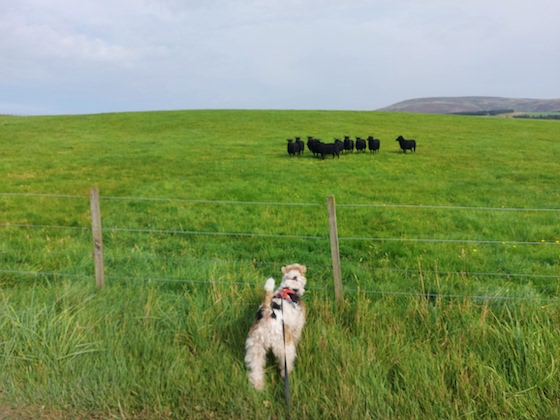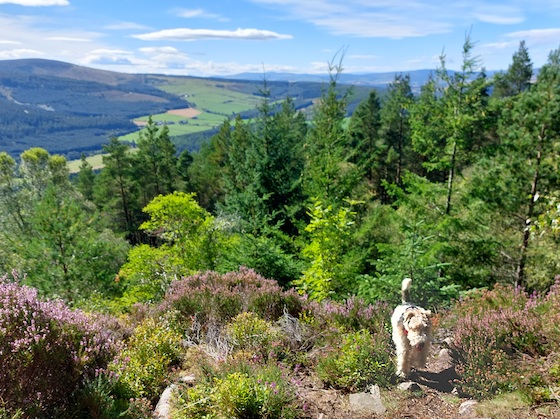Here's another dual purpose Nature Friday and Final Friday Feature post
Can you believe it? Despite encouragement from Gail's tutor to include me, Nobby, in as many stories as she likes, you'll never guess what my owner went and did this week on her Nature Writing course...
The theme was 'Facts are your Friend'.
In response to the task of writing a 350 word vignette about a something she sees in nature on a regular basis, enhanced by background reading on the topic, Gail submitted a piece titled 'Granite', in which I do not feature AT ALL!
I post it here only to demonstrate how boring Gail's 'Nobby-free' writing can be*.
PS from Gail: I'm afraid there is a grain of truth to Nobby's assertion that, when he is not included, I struggle a bit to keep things interesting. But then, my intention in signing up for the course was to stray out of my dog blogging comfort zone.
Granite
As the first storm of the winter hurtles against my bedroom window, I’m woken early. Listening to the gale ripping branches off the trees outside, I feel reassured that my house, like so many in my adoptive city of Aberdeen, is built of good, solid granite blocks.
In an hour or so, the morning dog walk round Duthie Park will take me past a patch of grass where half a dozen offcuts of quarried granite are scattered about, each labelled according to the location from where it was hewn.
Corrennie, Kemnay, Rubislaw, Sclattie, Clinterty, Peterhead.
Granites are composed of a crystalline matrix, the main constituent minerals being quartz, feldspar and mica. If I look carefully at the rocks in the park I note, beyond the obvious differences in hue, distinct variations in granularity, colour contrast and texture. They have in common a hardness and resistance to wear. Unlike the soft southerner’s sandstone widely used in the Central Belt, this rock is not for crumbling.
The granite of the Cairngorm plateau, described by Aberdonian writer Nan Shepherd as “defiant against frost and the old grinding of ice”, is a close relative of the quarried stones in the park.
Still in bed, hoolie still blowing, I contemplate the various ages of my house.
Rubislaw quarry, sometimes (wrongly) described as the biggest man-made hole in Europe, supplied the principal construction material for much of the city of Aberdeen, including my early Edwardian era home. Modern dating techniques estimate the granite to have been emplaced during the Ordovician, at a time when trilobites still swam the oceans and dinosaurs were but a distant gleam in evolution’s eye.
The chemistry of the magma, its depth of burial and rate of cooling determined the precise appearance of these granites. The rocks quarried in Peterhead, thirty miles north of Aberdeen, are a gay rosy-red, the colour imparted by iron-rich feldspars. The Rubislaw granite is more sombre. Aberdeen tourist blurb likes to emphasise the micas sparkling in the sunlight but the point is lost when the city is shrouded in haar. Forget Nan Shepherd. As winter trudges on, the literary reference that comes to mind will be ‘Fifty Shades of Grey’.
Cosy under my duvet, there’s something comforting about being further protected by walls built from a material unchanged for the best part of 470 million years.




















































